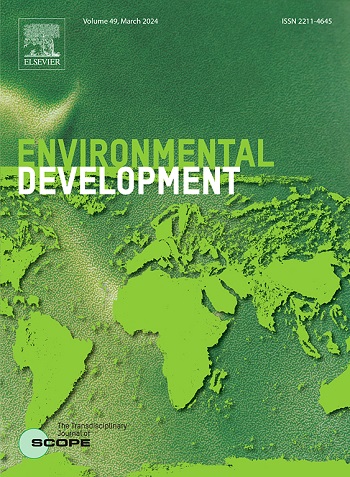马达加斯加西部贫困、气候导致的移民和森林砍伐之间的联系
IF 5.3
2区 环境科学与生态学
Q2 ENVIRONMENTAL SCIENCES
引用次数: 0
摘要
最近,马达加斯加干旱地区的人们迁移到更绿色、更潮湿的地区,对自然资源的需求增加,带来了社会经济和环境挑战。本文研究了马达加斯加西部重要的生物多样性热点Menabe Antimena保护区及其周边5个社区的人类迁移与土地利用变化之间的关系。我们通过进行92次半结构化访谈,分析了移民来源国和目的地之间的贫困和气候差异,其中46次访谈是对梅纳贝地区的移民进行的,46次访谈是对安德洛伊地区(一个促进移民流动的地区)的居民进行的。我们还研究了2017年至2022年期间的人口动态和生态指标,包括森林覆盖和探测到的VIIRS活火数量。结果显示,农民工迁移到降雨较多、贫困程度较低的地区,89.1%的人因饥荒和恶劣的生活方式而离开家乡。进入保护区的移民人数增加了3.2倍,其中63.0%的人直接从事非法农业活动。保护区内公社的森林覆盖率下降了22.1%,保护区外森林覆盖率下降了36.4%,而保护区内和保护区外的加权活火率分别上升了24.7%和55.9%,森林面积越大的公社火灾发生率越高。在移民中,45.7%的人计划一旦攒够了钱就回国,28.3%的人打算永久定居,13.0%的人打算在清除当地森林后迁移到生产力更高的地区。这些发现可以指导当局和保护管理人员制定政策,支持移民采用可持续的耕作方式,解决与森林砍伐的联系。本文章由计算机程序翻译,如有差异,请以英文原文为准。

Links between poverty, climate-induced migration and deforestation in western Madagascar
Recently, people from arid regions in Madagascar have migrated to greener and wetter areas, creating socioeconomic and environmental challenges from increased demand for natural resources. This paper examines the relationship between human migration and land use change in five communes in and around the Menabe Antimena protected area, a critical biodiversity hotspot in western Madagascar. We analysed poverty and climate differences between migrants' origins and destinations by conducting 92 semi-structured interviews, 46 with migrants in Menabe and 46 with residents of Androy, a region contributing to migration flow. We also investigated population dynamics and ecological indicators, including forest cover and number of VIIRS active fires detected weighted with precipitations between 2017 and 2022. Results show that migrants moved to areas with more rainfall and less poverty, with 89.1 % leaving their home villages due to famine and poor lifestyle. The number of migrants entering the protected area has increased 3.2 times with 63.0 % of them directly involved in illegal agricultural practices. The forest cover in areas of communes inside the protected area declined by 22.1 % though 36.4 % outside, while weighted active fires rose by 24.7 % inside and 55.9 % outside, with higher fire occurrences in communes with larger forest. Among migrants, 45.7 % plan to return home once they have saved sufficient funds, 28.3 % intend to settle permanently, and 13.0 % aim to relocate to more productive areas after clearing local forest. These findings can guide authorities and conservation managers in making policies to support migrants in adopting sustainable farming practices, addressing links to deforestation.
求助全文
通过发布文献求助,成功后即可免费获取论文全文。
去求助
来源期刊

Environmental Development
Social Sciences-Geography, Planning and Development
CiteScore
8.40
自引率
1.90%
发文量
62
审稿时长
74 days
期刊介绍:
Environmental Development provides a future oriented, pro-active, authoritative source of information and learning for researchers, postgraduate students, policymakers, and managers, and bridges the gap between fundamental research and the application in management and policy practices. It stimulates the exchange and coupling of traditional scientific knowledge on the environment, with the experiential knowledge among decision makers and other stakeholders and also connects natural sciences and social and behavioral sciences. Environmental Development includes and promotes scientific work from the non-western world, and also strengthens the collaboration between the developed and developing world. Further it links environmental research to broader issues of economic and social-cultural developments, and is intended to shorten the delays between research and publication, while ensuring thorough peer review. Environmental Development also creates a forum for transnational communication, discussion and global action.
Environmental Development is open to a broad range of disciplines and authors. The journal welcomes, in particular, contributions from a younger generation of researchers, and papers expanding the frontiers of environmental sciences, pointing at new directions and innovative answers.
All submissions to Environmental Development are reviewed using the general criteria of quality, originality, precision, importance of topic and insights, clarity of exposition, which are in keeping with the journal''s aims and scope.
 求助内容:
求助内容: 应助结果提醒方式:
应助结果提醒方式:


